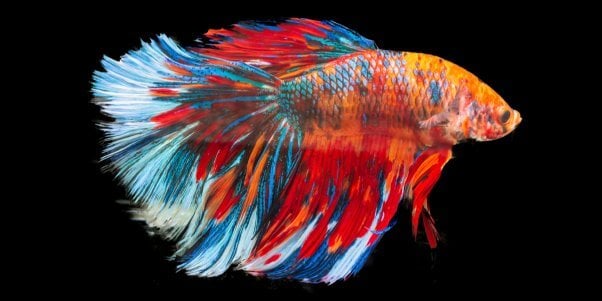Exactly How to Breed Betta Fish Efficiently: Expert Strategies and Insights for Hobbyists Seeking To Expand Their Betta Collection
Reproducing Betta fish requires a nuanced understanding of genetics and environmental conditions, making it crucial for enthusiasts to approach the process with both diligence and treatment. Developing an optimum reproduction environment, selecting the best sets, and observing the details of their courtship actions are foundational steps that can considerably affect the end result.
Recognizing Betta Fish Genetics
Understanding the genetics of Betta fish is important for effective reproduction, as it affects attributes such as shade, fin form, and actions. Betta fish show a varied array of colors and patterns, greatly identified by their genetic make-up. The main genetics liable for pigmentation consist of the "B" gene for blue, "D" genetics for red, and the "C" genetics for shade strength. Dog breeders can manipulate these qualities by selecting particular parent fish that exhibit desired characteristics.
In addition to coloration, fin morphology is an additional considerable element of Betta genetics (betta fish). The form and size of fins are influenced by numerous genes, including those that establish whether the fins are short, long, or veil-shaped. Understanding these hereditary variations helps dog breeders anticipate the phenotypic outcomes of their spawn
Additionally, behavioral attributes such as aggressiveness and territoriality can also be affected by genetics. These actions play an important duty in the reproducing process, as they can impact spawning success and the general temperament of the resulting fry. By adequately comprehending these hereditary principles, dog breeders can make educated choices, eventually boosting their breeding programs and attaining desirable outcomes.
Preparing the Breeding Atmosphere
Creating an ideal reproduction environment is crucial for the successful reproduction of Betta fish. The primary step in preparing this atmosphere is to pick a suitable reproduction tank, preferably varying from 5 to 10 gallons. This size enables for sufficient swimming area and the facility of territories. The storage tank needs to be equipped with a heating unit to keep a stable temperature in between 78 ° F and 80 ° F, which is crucial for motivating generating behavior.
Next, think about using a sponge filter or an air rock to provide gentle water flow without producing solid currents that can stress the fish. It is vital to mount plants or reproducing cones to supply concealing spots and promote comfort for the female during the spawning process. Floating plants, such as Java moss or water sprite, can also create a more native environment while helping with bubble nest building by the male.
Before introducing the breeding sets, make certain the water is conditioned and without hazardous chemicals, such as chlorine or heavy metals. betta fish. Normal water adjustments need to be performed to keep optimal water high quality, improving the chances of successful reproduction. With these prep work in position, the reproducing atmosphere will sustain the health and well-being of both Betta fish
Picking Reproduction Pairs
Choosing the ideal breeding sets is essential for attaining successful Betta fish recreation. Healthy Betta fish display dynamic colors, clear eyes, and energetic behavior.
Character is another vital consideration, as Betta fish are understood for their hostile nature. It is recommended to select a male and female that show compatible characters to minimize stress and anxiety throughout the reproducing process. A tranquil man can encourage a smoother courtship, while a female that is too hostile might disrupt the process.
Hereditary history likewise plays a substantial role in the high quality of the offspring. Breeding fish that are genetically varied can reduce the danger of genetic health and wellness concerns and boost the total vitality of the fry. It is useful to research the lineage of both the man and lady, concentrating on preferable attributes such as fin type, shade patterns, and dimension.
The Reproduction Refine
The reproduction process of Betta fish needs cautious preparation and interest to detail to make sure a successful outcome. Initially, it is crucial to prepare an appropriate reproduction storage tank, preferably a 5-10 gallon fish tank with a temperature preserved at 78-80 ° F. The storage tank should be equipped with a heating unit, filter (preferably sponge kind to avoid solid currents), and plenty of aquatic plants for the lady to hide.
As soon as the environment is established, present the picked reproducing set to the storage tank, allowing them to adjust. Observe their actions; the man will display fancy courtship rituals, consisting of flaring his fins and constructing a bubble nest. If the female shows check this passion, she will display upright red stripes suggesting readiness for spawning.
When the lady is responsive, the pair will involve in a mating accept, throughout which the male feeds the eggs. Maintaining optimal water conditions throughout this duration is crucial for the development of healthy and balanced Betta fry.
Taking Care Of Betta Fry

Feeding Betta fry is vital, as they call for a diet regimen high in healthy protein. At first, they description can be fed infusoria or liquid fry food, transitioning to finely smashed high-quality pellets as they grow. Feed little portions several times a day to motivate healthy development without overwhelming the tank with leftover food.

As they mature, monitor their growth carefully and divide any aggressive people to stop harm. By supplying a supporting setting and correct nourishment, hobbyists can effectively increase Betta fry into lively, healthy fish, inevitably boosting their breeding endeavors.
Conclusion
Successful Betta fish reproduction needs meticulous focus to hereditary choice, ecological problems, and look after the fry. By recognizing the genetics of Betta fish and preparing an appropriate breeding atmosphere, enthusiasts can enhance the opportunities of creating vivid, healthy spawn. Choosing suitable breeding sets and very read what he said closely monitoring the courtship and spawning procedures are vital. Finally, offering optimum look after the fry guarantees their healthy development, contributing to a growing Betta collection.
Comments on “The Ultimate Betta Fish Care Overview for New Pet Owners”